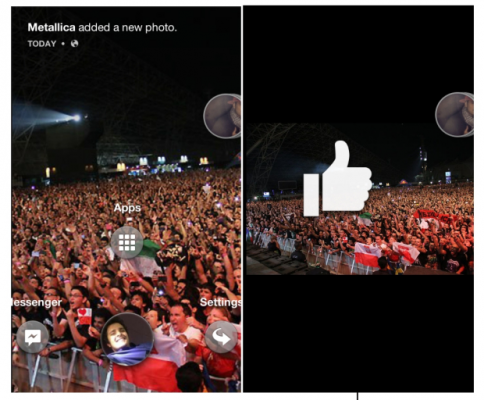

So, I would like to take a different approach and prioritize the user’s needs relative to the use of a home screen. Granted Facebook is an immensely popular app that people access several times a day. INTERVIEWEE: Okay, so Facebook Home failed because the design did not take into account a key user need: to have fast access to apps that will help them get a task done.
Facebook home screen on screen how to#
(The interviewee takes a minute to write down how she will structure her analysis.) Interviewee’s notes on how to structure answer INTERVIEWEE: Okay, could I take a moment to think about how I will approach this question? They represent a large percentage of Facebook users. INTERVIEWEE: Is there any particular region that this new home screen will be targeted to? INTERVIEWEE: So, is the business goal to increase engagement of Facebook properties? INTERVIEWER: Well, if we can design a home screen that appeals to the majority of users, we think we can increase engagement across many Facebook properties. Facebook Home did have an app launcher that provided access to apps, but it took too many clicks to access them. It was a beautiful interface, but it missed the crucial fact that users wanted direct access to their favorite apps and widgets. The feature covered the device’s screen with a feed of Facebook photos, notifications, and posts. It failed because Home prioritized displaying Facebook content when users’ main pain point was to access their favorite apps. INTERVIEWER: The feature was called Facebook Home. INTERVIEWER: Yes, but it was not successful. INTERVIEWEE: I believe Facebook launched a home screen feature in 2013.

We chose this technique because, in the case of a phone home screen, there is a path a user goes through to achieve their goal. To do this use one of the following two techniques: create a customer journey map or list use cases. The next step is to design innovative solutions to help users achieve their goals. If you define what this means for your user, you will gain clarity on what the key goal of your product should be. A “job” refers to the progress your user wants to achieve in a particular circumstance. Clayton Christensen refers to this as the “job” your users want to get done in the book Competing Against Luck. To come up with innovative design ideas, you need to understand what the user wants to do relative to the product you are building. Are you confident and sound credible? Would engineers and other team members follow your lead?.Can you provide ideas that no other candidate has mentioned?.Do you go beyond generalities in your solutions and provide detailed descriptions?.Is your answer structured and logical, or do you ramble?.Are you able to provide multiple and diverse use case scenarios?.Can you empathize with customers? Can you articulate their needs, feelings, and expectations?.The interviewer is evaluating you on the following: This process involves determining who the customer is, understanding what they want to accomplish, defining multiple use case scenarios, prioritizing what to build and having good business acumen. This product design interview question tests whether you understand the process of going from customer needs to product development. How would you design a Facebook home screen?


 0 kommentar(er)
0 kommentar(er)
